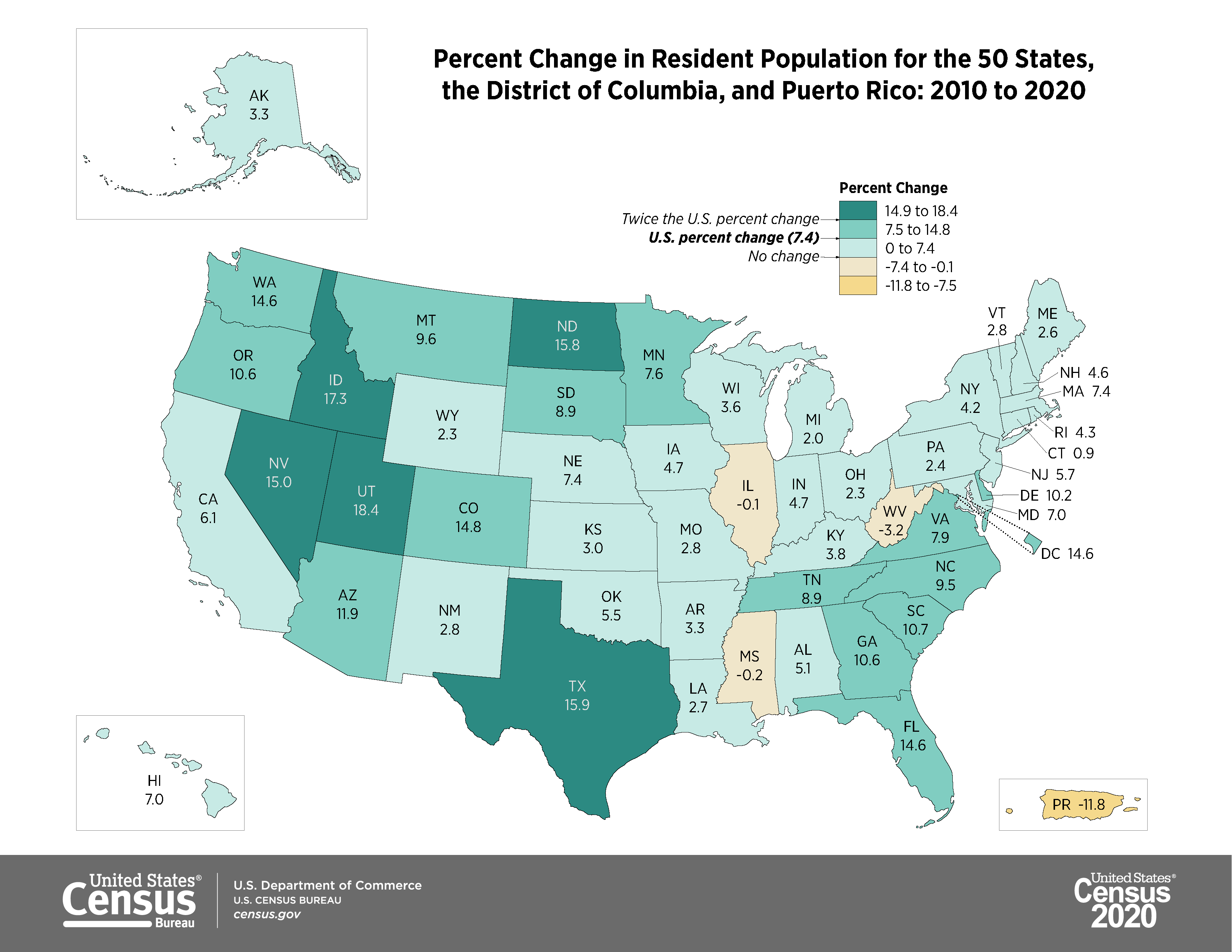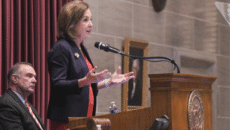It’s official: Missouri will not gain or lose any congressional seats, according to the 2020 apportionment results released by the U.S. Census Bureau Monday.
Missouri will retain its eight congressional seats but neighboring Illinois is among seven states losing a congressional seat. California, Michigan, New York, Ohio, Pennsylvania, and West Virginia also lost a seat; Texas gained two seats while Colorado, Florida, Montana, North Carolina, and Oregon gained one seat.
The apportionment data is collected every 10 years. In 2010, Missouri lost one congressional seat and had a population of 751,435 per representative. In 2020, the Census data reflected a population of 770,035 per representative.
In 2000, when Missouri had nine seats, it had a population of 622,918 per representative.
Missouri’s population clocked in at more than 6.1 million. It was not in the top 10 runner-up list of states on deck to receive another congressional seat.
Missouri’s population rose 2.8 percent over the last 10 years, fairly in line with the Midwest average of 3.1 percent growth. The Midwest saw the slowest growth percentage over the past decade compared to other regions, according to the data released Monday.
The data release from the Census Bureau didn’t mean much for Missouri in terms of congressional seats, but the attention can now fully be on the legislative map drawing, Yurij Rudensky, redistricting counsel in the Brennan Center’s Democracy Program, said.
“The question now is: Is this going to be a smooth process where the commissioners from the two parties work together or is it going to be another cycle punctuated with partisan gridlock … where the backup judicial panel has to take up the task,” Rudensky said.
Prior to the release of the data, Missouri waffled a bit on just how redistricting would take place. In 2018, voters approved the creation of a non-partisan state demographer position to draw the legislative districts. The state auditor would pick a handful of people to submit to the Senate where the majority and minority leaders would choose a demographer, under that plan. If the two leaders could not agree, a demographer would be chosen through a lottery system.
But in November, more than 1.3 million Missourians voted to repeal those so-called Clean Missouri changes. It reverted the system back to leaving it up to bipartisan commissions to draw the districts. But it also instituted a policy of “one person, one vote” for redistricting which opponents have argued could unfairly exclude children or noncitizens.
“There will be opportunities for the public to provide input and comment. Unlike decades past, there’s a lot more attention being paid to this issue and to other issues that pertain to democracy and voting,” Rudensky said. “I know there are a lot of community organizations and other grassroots groups weighing in and trying to secure fair outcomes. We will see to what extent the commissions and the backup judicial panel pay attention.”
According to the latest data, the U.S. population as of April 1, 2020, was 331,449,281 — a 7.4 percent increase from 2010 that was recorded at the beginning of the COVID-19 pandemic.

Kaitlyn Schallhorn was the editor in chief of The Missouri Times from 2020-2022. She joined the newspaper in early 2019 after working as a reporter for Fox News in New York City.
Throughout her career, Kaitlyn has covered political campaigns across the U.S., including the 2016 presidential election, and humanitarian aid efforts in Africa and the Middle East.
She is a native of Missouri who studied journalism at Winthrop University in South Carolina. She is also an alumna of the National Journalism Center in Washington, D.C.
Contact Kaitlyn at kaitlyn@themissouritimes.com.
























